Little Shop of Horrors (PG-13) ★★★★
 Spoilers Ahoy! This review talks in detail about plot points, including the ending, so if you haven't seen either the play or the movie and want to experience it without knowing beforehand what happens, I suggest avoiding this review.
Spoilers Ahoy! This review talks in detail about plot points, including the ending, so if you haven't seen either the play or the movie and want to experience it without knowing beforehand what happens, I suggest avoiding this review.
In late 1959, using his particular brand of low-budget filmmaking, Roger Corman did what many considered impossible: he completed a movie in two days. Called The Little Shop of Horrors, it attained a cult fandom over the course of the next two decades. Although making almost nothing during a short, ignominious theatrical run, it found an audience during TV airings and, with its dark, campy humor, attracted a small-but-loyal group of adherents. Today, Corman's black-and-white picture is known primarily for two things: it marked one of Jack Nicholson's early roles and it inspired Howard Ashman and Alan Menken's musical play, Little Shop of Horrors.
The play, which was surprisingly faithful in its overall story to Corman's movie, debuted Off-Off-Broadway in 1982 before moving Off-Broadway a month into its run. Almost from the outset, chief financier David Geffen had thoughts of a movie - a possibility Ashman wasn't averse to. Initially, Geffen scored a coup by catching the interest of Martin Scorsese but, by the time the film went before the cameras, Scorsese was either unavailable or no longer interested. Frank Oz replaced him. The movie had a long, although not especially arduous shoot, with everything being shot on the 007 Stage at Pinewood Studios in England, where the cavernous open space was turned into a replica of New York's Skid Row circa 1960.
No discussion about Little Shop of Horrors' production history would be complete without mentioning the ending. As initially filmed, it mirrored the stage play, including the deaths of Seymour and Audrey and the triumph of the plant. Although Oz and Ashman were satisfied with this conclusion, neither producer Geffen nor audiences were willing to accept it. Early previews were disastrous and Oz/Ashman realized that, unless they rewrote the ending, Warner Brothers most likely wouldn't open the movie. In order to make the necessary changes, a lavish "monster movie" sequence, in which Audrey II rampaged through New York, had to be jettisoned, taking along with it approximately one-quarter of Little Shop's ballooning budget. For many years, the "lost ending" became an obsession among the film's faithful. (I remember seeing stills of it in a late '80s issue of Cinefantastique.) A black-and-white workprint of the ending was originally included on the 1997 DVD release - until copyright-holder Geffen had the DVD recalled and the deleted scenes removed. Subsequently, a color copy of the original ending was uncovered and, after being cleaned up, it was made available as part of a 2012 Director's Cut Blu-Ray edition. Now those who are curious can watch both the Theatrical and the Unreleased versions side-by-side and determine which works better. I have some thoughts about this that I will share later in this review.
Little Shop of Horrors tells the story of a downtrodden nerd named Seymour Krelborn (Rick Moranis) who lives in the basement of his workplace, Mushnik's Flower Shop. Mr. Mushnik (the late Vincent Gardenia) treats Seymour like dirt, causing Seymour to bemoan his fate: "I keep askin' God what I'm for, And He tells me 'Gee, I'm not sure.'" The other employee at the "God and customer forsaken store" is the platinum blond bimbo Audrey (Ellen Greene), with whom Seymour is hopelessly in love. Audrey secretly fantasizes about living a life with Seymour as her husband, but doesn't reveal her dreams because her boyfriend, a sadistic dentist named Orin Scrivello, D.D.S (Steve Martin), wouldn't like it.
For Seymour, everything is about to change. A strange and exotic plant he recently bought is beginning to blossom into something the likes of which no one has ever before seen. It's a sickly thing, however, because it responds only to one kind of food: fresh blood. After draining himself on a daily basis via cuts to his fingers, Seymour is rewarded by a spurt of growth from his horticultural oddity, Audrey II. Suddenly, the plant is the talk of the city, Seymour is famous, and Mushnik's Flower Shop is flooded with customers. But, when Seymour cannot keep up with the plant's insatiable appetite, Audrey II makes a suggestion (yes, it can talk, using the voice of the Four Tops' Levi Stubbs): ice the nasty, abusive Orin and use him as food. 'Cause if Seymour feeds it, Audrey II can "grow up big and strong." When that happens, it can fill all of Seymour's dreams.
Killing Orin, however, proves to be difficult for Seymour - more because of basic incompetence than moral compunctions. Orin, however, helps out by accidentally inhaling more laughing gas than he should. Seymour lugs the lifeless body back to the shop, cuts it up in a back alley (an act witnessed by a suitably horrified Mr. Mushnik), and feeds Audrey II. Soon thereafter, with Orin now permanently out-of-the-picture, Seymour and Audrey have a heart-to-heart that ends with a soaring duet and a kiss. But, even though meek Seymour is getting what comes to him, he has two problems: Mushnik knows too much (and therefore becomes supper for the plant) and Audrey II isn't just some fly trap on steroids - it's a "mean, green mother from outer space" and it's bent on world domination.
Ashman was credited with Little Shop's screenplay and a majority of the dialogue was from the stage musical. Oz didn't make any major changes, although he often moved the action out of the store and into the nearby environs to make things less claustrophobic. Four songs from the musical were excised. Two were significantly changed ("Ya Never Know" became "Some Fun Now"; "The Meek Shall Inherit" was chopped up) and one new one was added ("Mean Green Mother from Outer Space"). "Don't Feed the Plants", the play's finale, although recorded and filmed, was removed out of necessity when the ending was changed.
Unlike many screen musicals, Little Shop of Horrors didn't require extensive choreography. There's a lot of singing but not much dancing. The most complex number is "Skid Row (Downtown)", which includes a large number of extras roaming around the set. Oz kept camera movements clean and conventional, showing a preference for long takes. The most ambitious of these occurs during a bridge between "Somewhere That's Green" and "Some Fun Now", when the camera pulls back from Audrey posing in her ground floor apartment window, pans left then up, and zeroes in on the three chorus girls, who are frolicking on a roof.
Oz's use of practical special effects (he has stated there were only two optical effects in the theatrical release) is one reason why the movie has stood the test of time. The animatronic Audrey II, which required sixty operators in its largest iteration, looks as good as any modern CGI creation. Visu
To get the full Quicklook Films experience, uncheck "Enable on this Site" from Adblock Plus
box office top 10
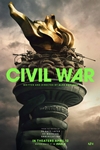
Civil War Released: April 12, 2024 Cast: Kirsten Dunst, Wagner Moura 11.1M
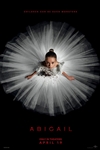
Abigail Released: April 19, 2024 Cast: Melissa Barrera, Dan Stevens 10.2M

Godzilla x Kong: The New Empire Released: March 29, 2024 Cast: Rebecca Hall, Brian Tyree Henry 9.5M
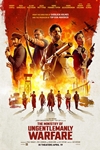
The Ministry of Ungentlemanly Warfare Released: April 19, 2024 Cast: Henry Cavill, Eiza Gonzalez 9M
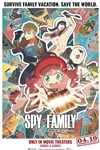
Spy x Family Code: White Released: April 19, 2024 Cast: Takuya Eguchi, Saori Hayami 4.9M

Kung Fu Panda 4 Released: March 8, 2024 Cast: Jack Black, Viola Davis 4.6M

Ghostbusters: Frozen Empire Released: March 22, 2024 Cast: Paul Rudd, Carrie Coon 4.4M

Dune: Part Two Released: March 1, 2024 Cast: Timothée Chalamet, Rebecca Ferguson 2.9M
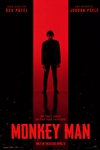
Monkey Man Released: April 5, 2024 Cast: Dev Patel, Sikandar Kher 2.2M
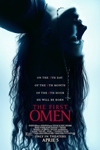
The First Omen Released: April 5, 2024 Cast: Nell Tiger Free, Bill Nighy 1.7M






